GAETANO PREVIATI
(Ferrara 1852- Lavagna 1920)
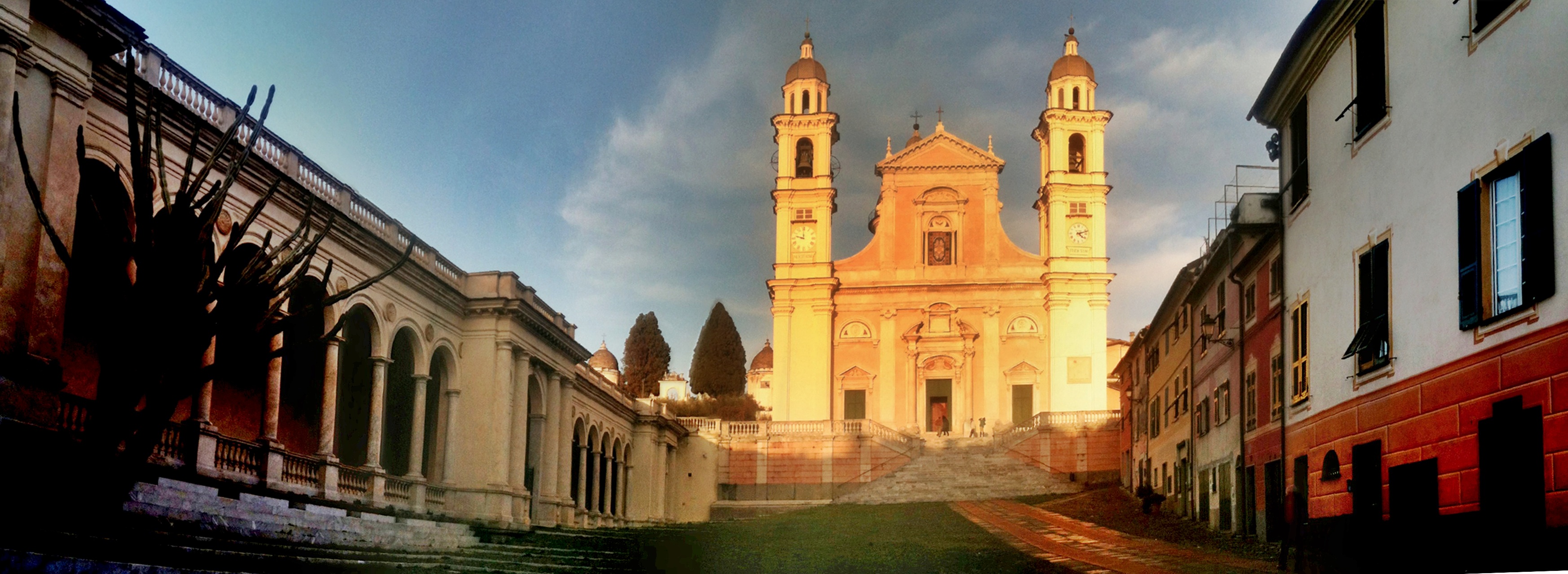
THE LAVAGNA PERIOD
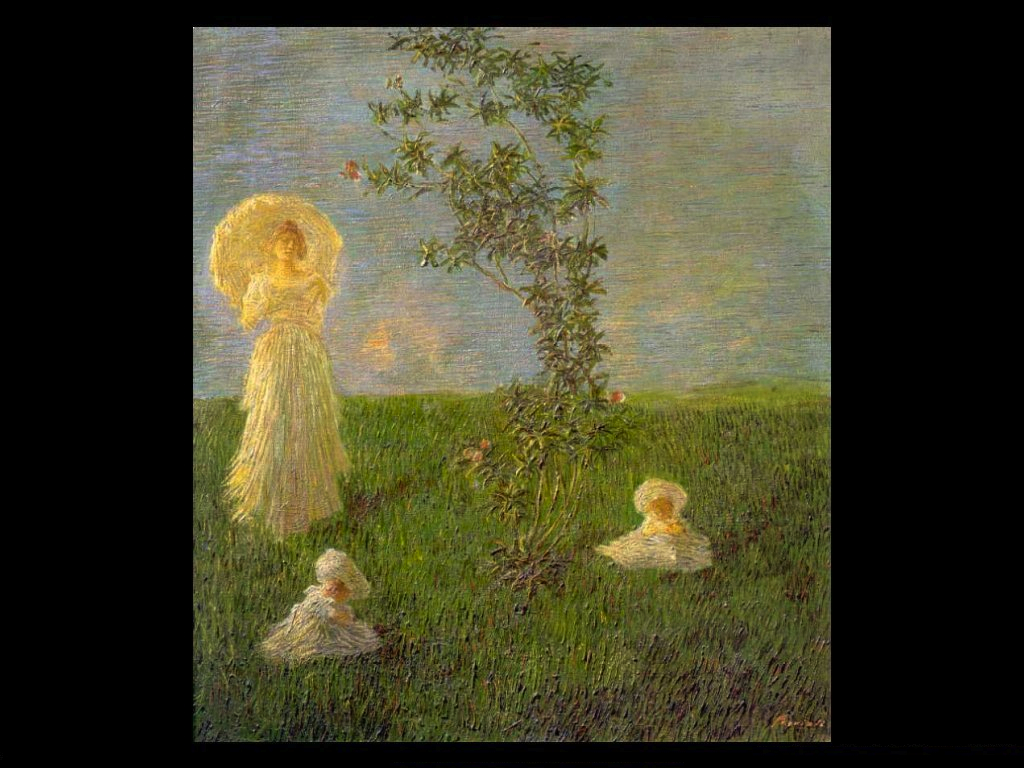
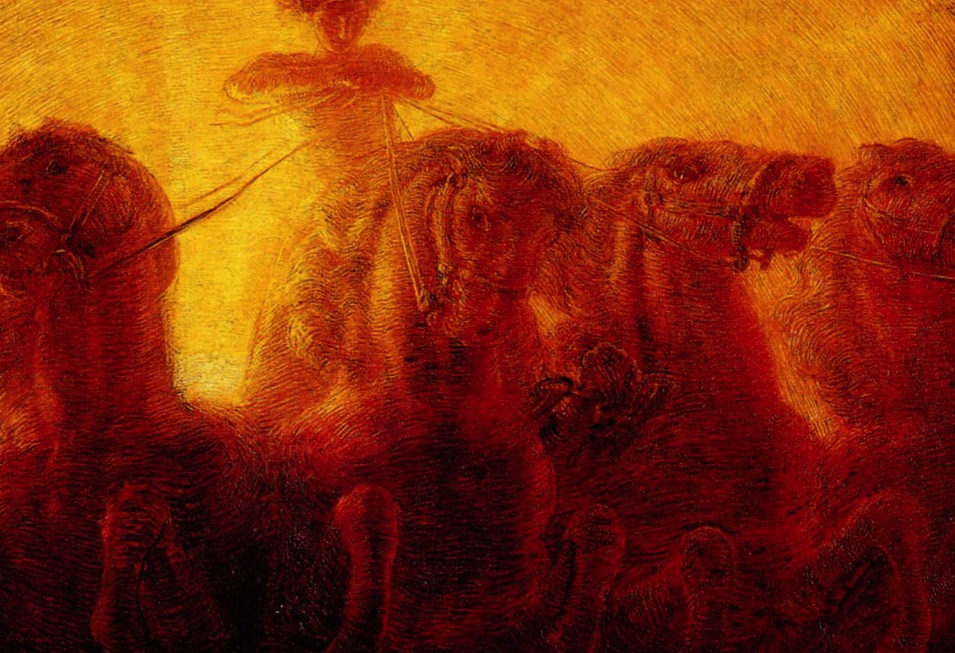
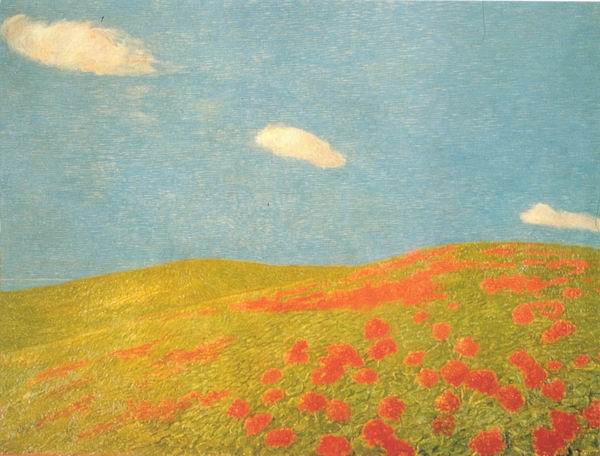
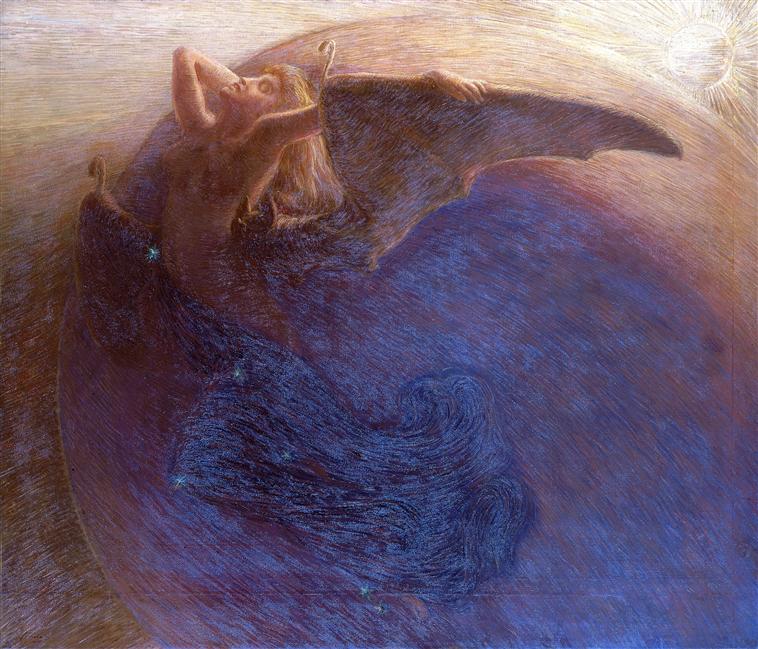
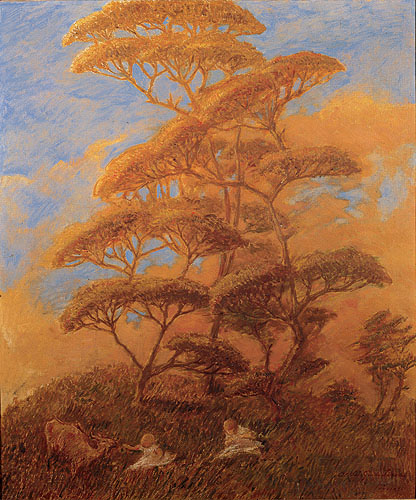
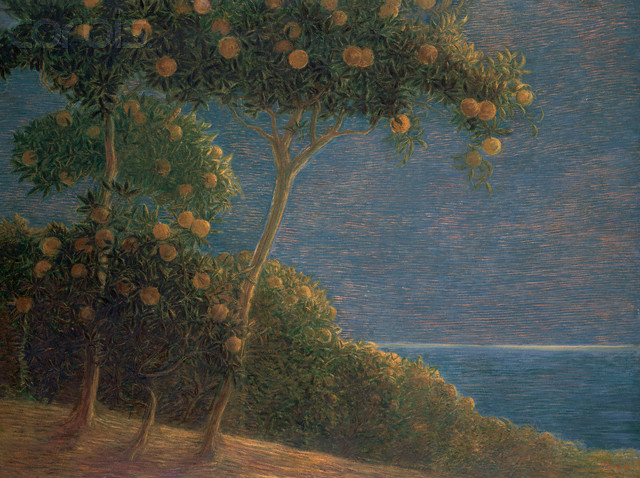
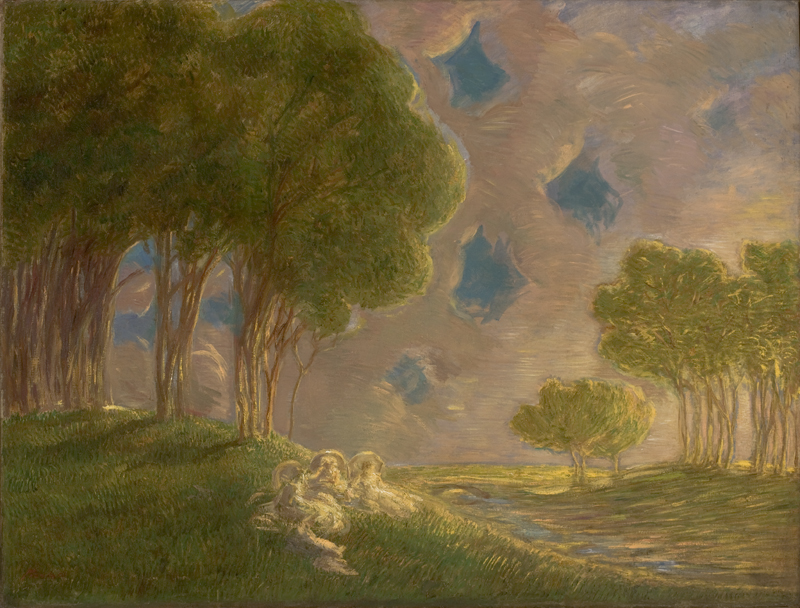
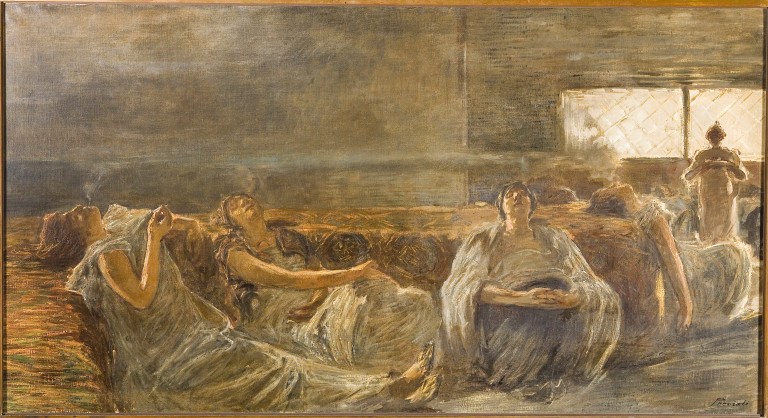
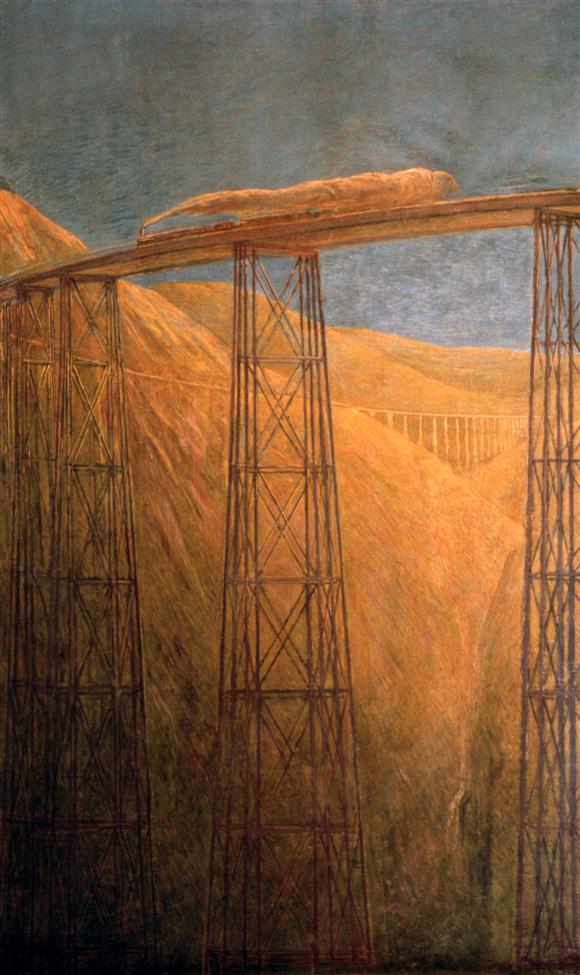
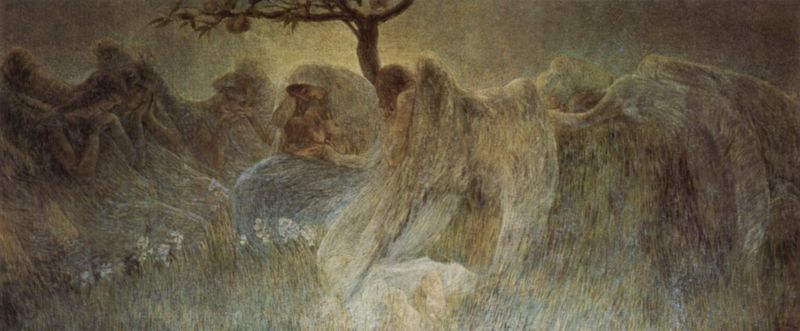
Gaetano Previati, a renowned twentieth century Italian painter,
was born in Ferrara on 31st August 1852. He studied art in Ferrara, but soon
afterwards moved to Milan, where he attended the Brera Academy. It was here in
the Lombard capital that Previati began working as an artist, his modernity and
innovation immediately singling him out. The Ferrara-born painter is universally
acknowledged as the forefather of divisionist painting in Italy.
The nineteenth century, which was characterized in Europe by the birth of the new impressionist and then post impressionist style of painting, was suffocated in Italy in a cultural climate linked to regionalist painting. Gaetano Previati was one of few artists who overcame the traditions of historical nineteenth century painting , opening up the new century to the modernity of Divisionism and Symbolism. Previati, in addition to being a successful painter, also wrote art treatises in which he espoused the new vision of painting. This was a whole new generation of artists who felt the need to sanction the characteristics of the new art through writing and studies. Previati was immediately acknowledged as one of the masters of this painting and even artists of the caliber of Umberto Boccioni shared this opinion.
After the anthological exhibitions of Ferrara in 1969 and Milan in 1999, the municipal authority of Lavagna now presents an important exhibition dedicated to the artist.
The event documents the twenty years period that Previati spent on the Ligurian riviera. On show are paintings, sketches and drawings from the "Lavagna period" and from previous years. The exhibition opens with several self-portraits by the artist, including "Aurora or Self Portrait with model" dating back to 1884. These are followed by religious works, of which Previati painted a great many. Gabriele D'Annunzio indeed defined him, "the great artist of the Way of the Cross".
An entire section is dedicated to the triptych of the "Assumption", painted in 1927 for the Cathedral of San Lorenzo in Genoa. Two nocturnes introduce the canvases on loan from the Sala della Musica in Lavagna. These were works commissioned by Alberto Grubicy, a rich gallery owner, for his luxury Milan home. All the body of works belonging to Grubicy were bequeathed in his last will and testament in 1922 to D'Annunzio, who moved them to his Lake Garda home, named the "Vittoriale degli Italiani".
Other paintings document the "joy of Lavagna", of which the artist himself spoke in his writings, with images bathed in light and nature, flowers gathered in his garden and transformed into the protagonists of chromatic painting.
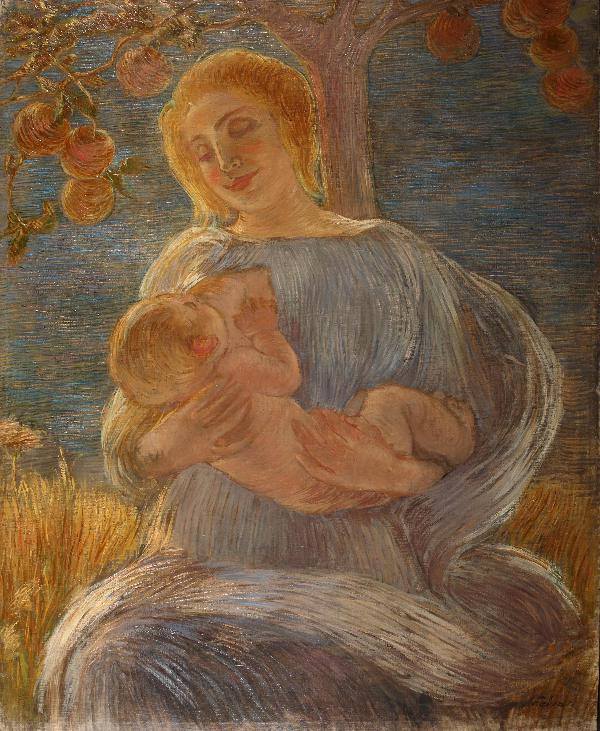
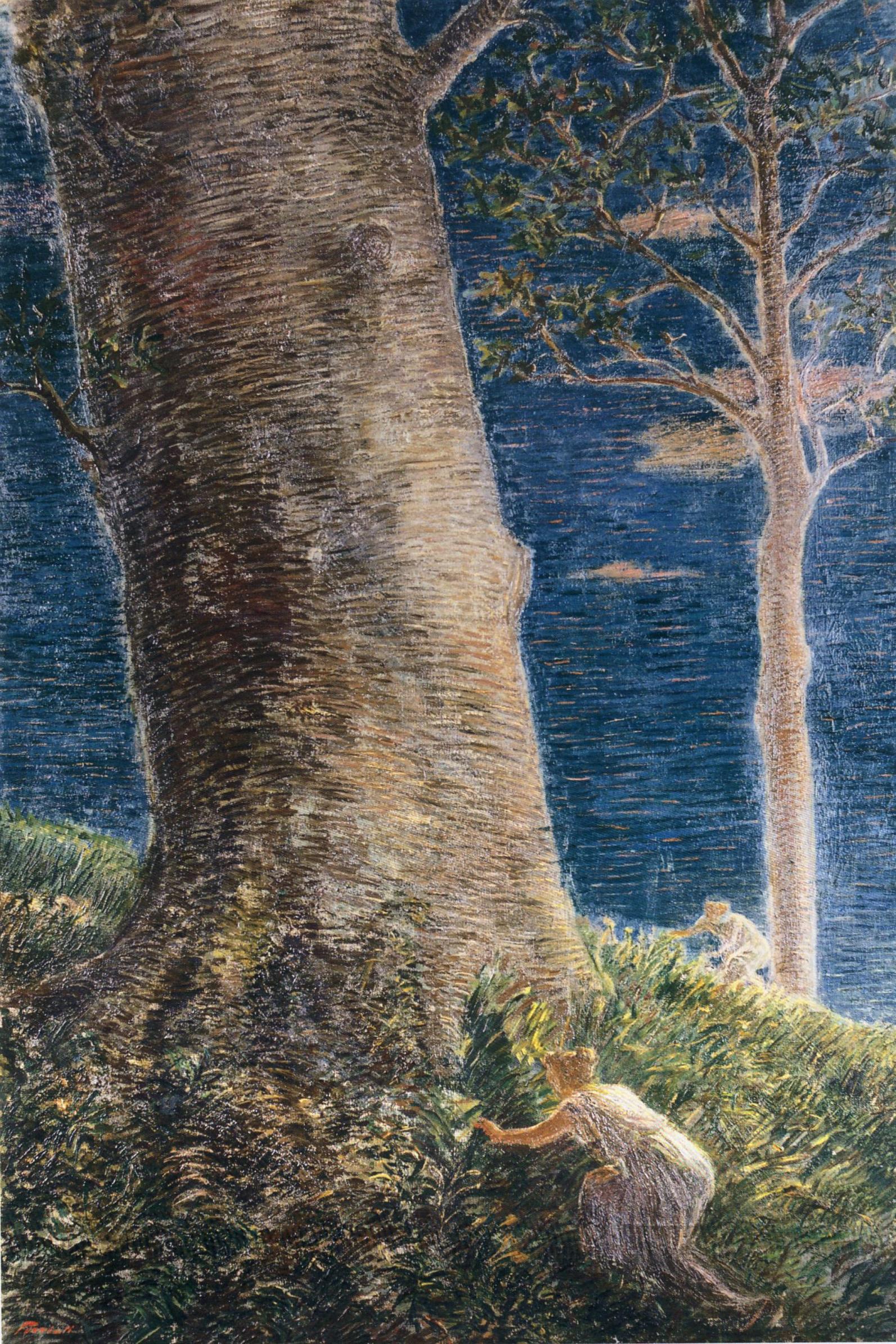
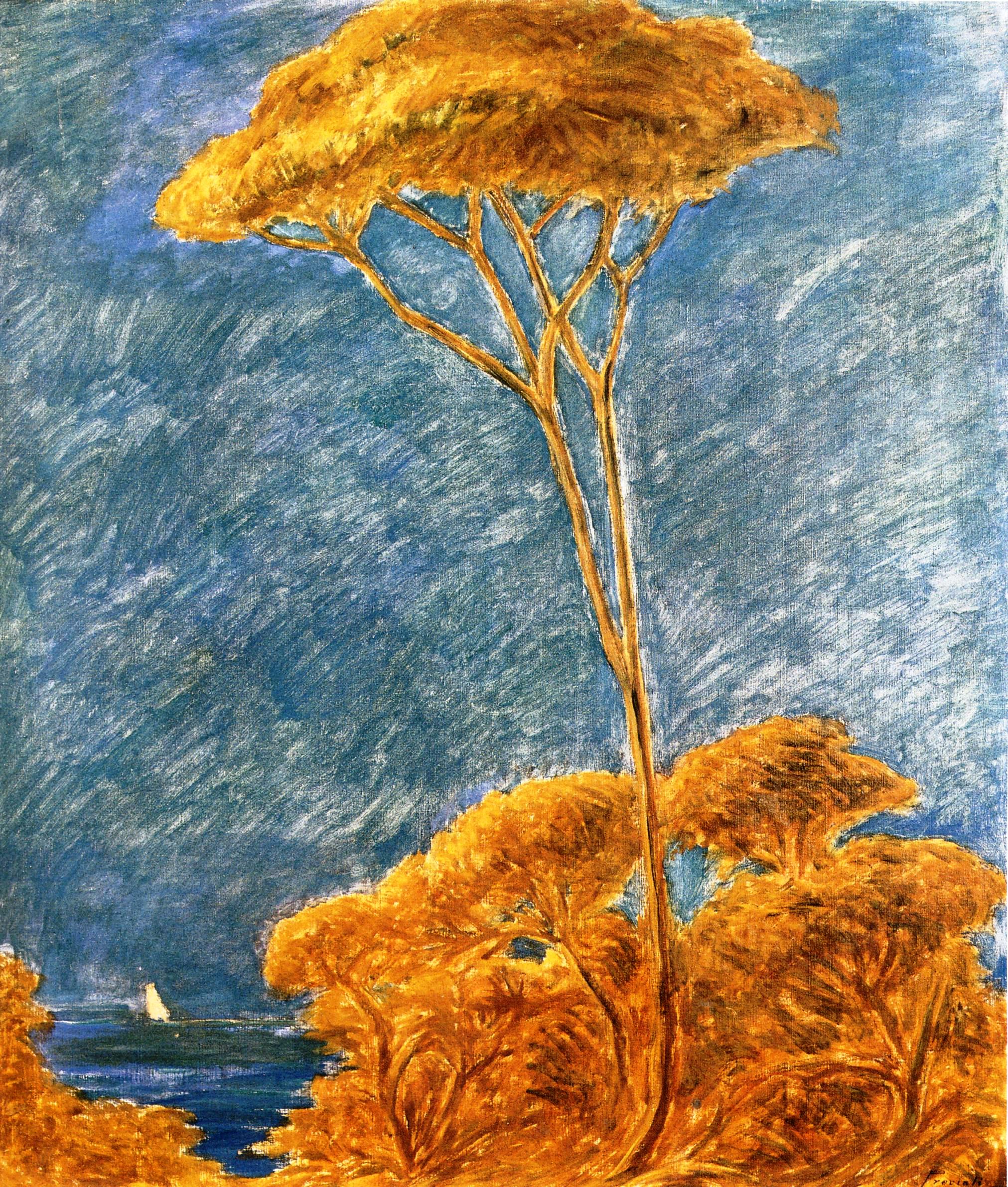
l piatti preferit1 di Previati
MINESTRA DI CAVOLO NERO E FUNGHI
500 gr cavolo nero
1 ciuffo di prezzemolo
1 gambo di sedano
1 carota
100 gr funghi secchi
200 gr corzetti di polcevera
50 gr formaggio gratuggiato
brodo vegetale
2 cucchiai di olio
Pulire il cavolo nero , tagliarlo lessarlo e metterlo a bagno in acqua fredda
Tritare le verdure e rosolarle nell'olio
Aggiungere i funghi rinvenuti in acqua calda e tritati
Portare a bollire il brodo e portare a cottura i corzetti
3 minuti prima di terminare la bollitura aggiungere il cavolo nero e il soffritto
Servire spolverando di formaggio
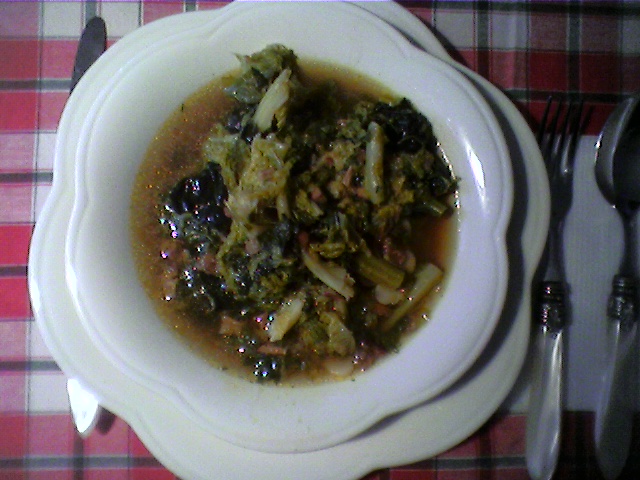
Preparazione a cura di Gianna Mena
BURIDDA DI GAMBERI
Preparazione:
400 g di code di gamberi (o di scampi)
6 carciofi
2 limoni
uno spicchio d'aglio
un mazzetto di timo
un peperoncino piccante
2 cucchiai di olio extravergine d'oliva
70 g di burro
sale
pepe bianco
1) Mettete il burro a pezzetti in una ciotola e lavoratelo con un cucchiaio di legno finche sara soffice come una crema;
aggiungete un pizzico di sale, qualche goccia di succo di limone e un cucchiaino di timo tritato; copritelo e mettetelo
in frigorifero.
2) Togliete le foglie piu dure dei carciofi, eliminate le spine interne e l'eventuale fieno e tagliateli a spicchi;
raccoglieteli man mano in una ciotola di acqua a cui avrete aggiunto il succo di mezzo limone. Alla fine sgocciolateli,
tuffateli in acqua bollente salata, cuoceteli per 10 minuti e scolateli su un piatto.
3) Sgusciate le code di gamberi ed eliminate il filetto nero intestinale aiutandovi con la punta di un coltellino o uno
stecchino.
4) Lavate il limone rimasto e prelevatene la parte gialla della scorza con un pelapatate; tritatela insieme allo
spicchio d'aglio e al peperoncino a cui avrete tolto i semi per non rendere il piatto troppo piccante.
5) Scaldate in un tegame un filo di olio, unitevi il trito e fate soffriggere a fiamma bassa per un minuto, poi
aggiungete i gamberi, alzate la fiamma e lasciate insaporire per un paio di minuti.
6) Spremete il limone e versate il succo sui gamberi; salate, unite un pizzico di pepe e aggiungete anche i carciofi.
Mescolate e lasciate sul fuoco ancora qualche istante; distribuite sulla preparazione il burro al timo a fiocchetti,
lasciatelo sciogliere e servite
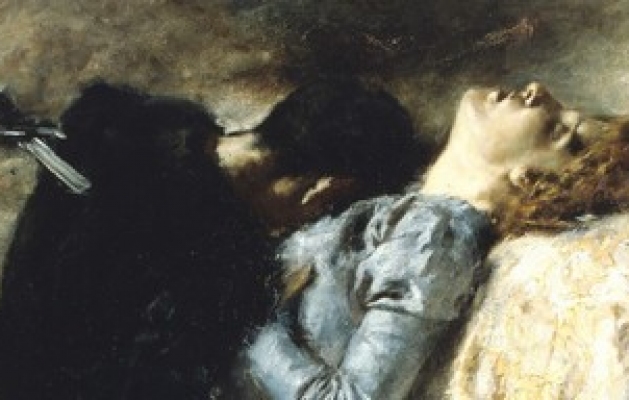
The nineteenth century, which was characterized in Europe by the birth of the new impressionist and then post impressionist style of painting, was suffocated in Italy in a cultural climate linked to regionalist painting. Gaetano Previati was one of few artists who overcame the traditions of historical nineteenth century painting , opening up the new century to the modernity of Divisionism and Symbolism. Previati, in addition to being a successful painter, also wrote art treatises in which he espoused the new vision of painting. This was a whole new generation of artists who felt the need to sanction the characteristics of the new art through writing and studies. Previati was immediately acknowledged as one of the masters of this painting and even artists of the caliber of Umberto Boccioni shared this opinion.
After the anthological exhibitions of Ferrara in 1969 and Milan in 1999, the municipal authority of Lavagna now presents an important exhibition dedicated to the artist.
The event documents the twenty years period that Previati spent on the Ligurian riviera. On show are paintings, sketches and drawings from the "Lavagna period" and from previous years. The exhibition opens with several self-portraits by the artist, including "Aurora or Self Portrait with model" dating back to 1884. These are followed by religious works, of which Previati painted a great many. Gabriele D'Annunzio indeed defined him, "the great artist of the Way of the Cross".
An entire section is dedicated to the triptych of the "Assumption", painted in 1927 for the Cathedral of San Lorenzo in Genoa. Two nocturnes introduce the canvases on loan from the Sala della Musica in Lavagna. These were works commissioned by Alberto Grubicy, a rich gallery owner, for his luxury Milan home. All the body of works belonging to Grubicy were bequeathed in his last will and testament in 1922 to D'Annunzio, who moved them to his Lake Garda home, named the "Vittoriale degli Italiani".
Other paintings document the "joy of Lavagna", of which the artist himself spoke in his writings, with images bathed in light and nature, flowers gathered in his garden and transformed into the protagonists of chromatic painting.

l piatti preferit1 di Previati
MINESTRA DI CAVOLO NERO E FUNGHI
500 gr cavolo nero
1 ciuffo di prezzemolo
1 gambo di sedano
1 carota
100 gr funghi secchi
200 gr corzetti di polcevera
50 gr formaggio gratuggiato
brodo vegetale
2 cucchiai di olio
Pulire il cavolo nero , tagliarlo lessarlo e metterlo a bagno in acqua fredda
Tritare le verdure e rosolarle nell'olio
Aggiungere i funghi rinvenuti in acqua calda e tritati
Portare a bollire il brodo e portare a cottura i corzetti
3 minuti prima di terminare la bollitura aggiungere il cavolo nero e il soffritto
Servire spolverando di formaggio

Preparazione a cura di Gianna Mena
BURIDDA DI GAMBERI
Preparazione:
400 g di code di gamberi (o di scampi)
6 carciofi
2 limoni
uno spicchio d'aglio
un mazzetto di timo
un peperoncino piccante
2 cucchiai di olio extravergine d'oliva
70 g di burro
sale
pepe bianco
1) Mettete il burro a pezzetti in una ciotola e lavoratelo con un cucchiaio di legno finche sara soffice come una crema;
aggiungete un pizzico di sale, qualche goccia di succo di limone e un cucchiaino di timo tritato; copritelo e mettetelo
in frigorifero.
2) Togliete le foglie piu dure dei carciofi, eliminate le spine interne e l'eventuale fieno e tagliateli a spicchi;
raccoglieteli man mano in una ciotola di acqua a cui avrete aggiunto il succo di mezzo limone. Alla fine sgocciolateli,
tuffateli in acqua bollente salata, cuoceteli per 10 minuti e scolateli su un piatto.
3) Sgusciate le code di gamberi ed eliminate il filetto nero intestinale aiutandovi con la punta di un coltellino o uno
stecchino.
4) Lavate il limone rimasto e prelevatene la parte gialla della scorza con un pelapatate; tritatela insieme allo
spicchio d'aglio e al peperoncino a cui avrete tolto i semi per non rendere il piatto troppo piccante.
5) Scaldate in un tegame un filo di olio, unitevi il trito e fate soffriggere a fiamma bassa per un minuto, poi
aggiungete i gamberi, alzate la fiamma e lasciate insaporire per un paio di minuti.
6) Spremete il limone e versate il succo sui gamberi; salate, unite un pizzico di pepe e aggiungete anche i carciofi.
Mescolate e lasciate sul fuoco ancora qualche istante; distribuite sulla preparazione il burro al timo a fiocchetti,
lasciatelo sciogliere e servite

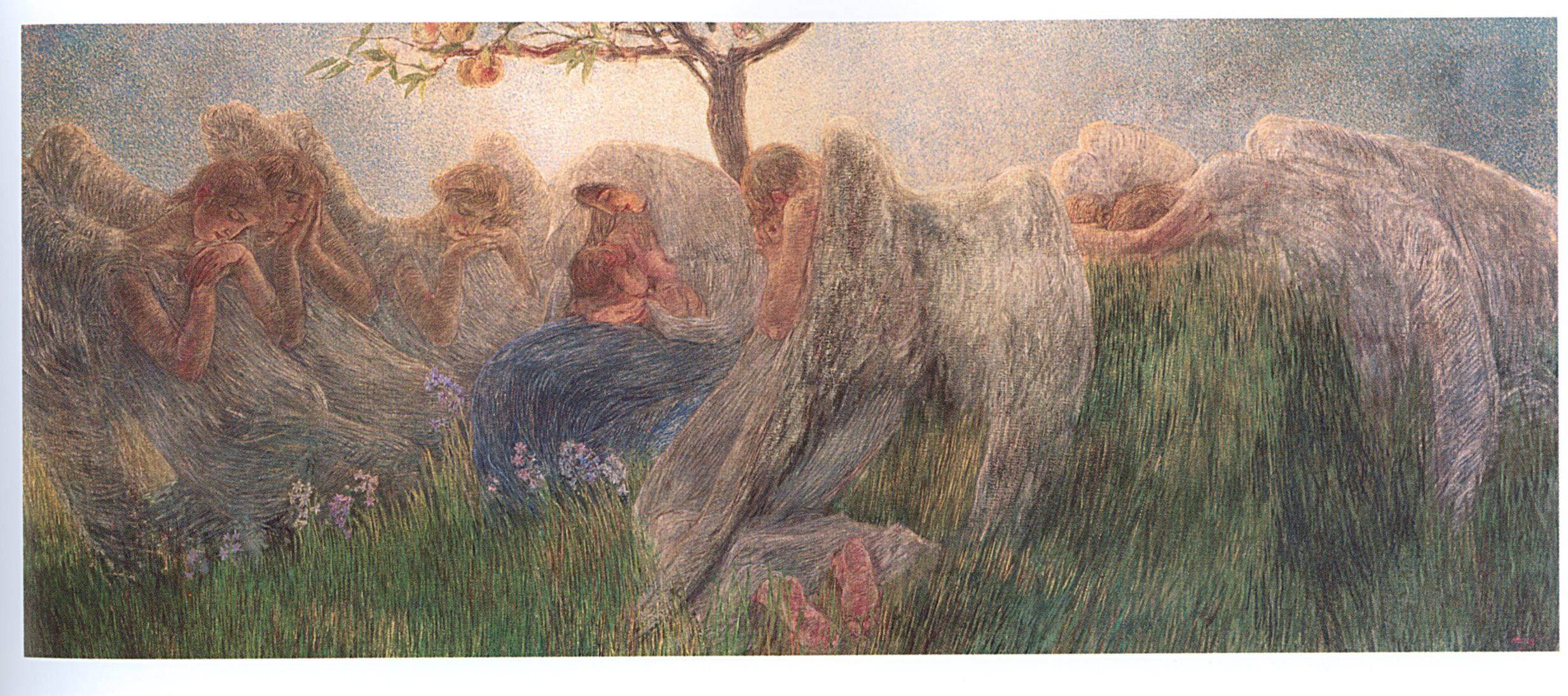
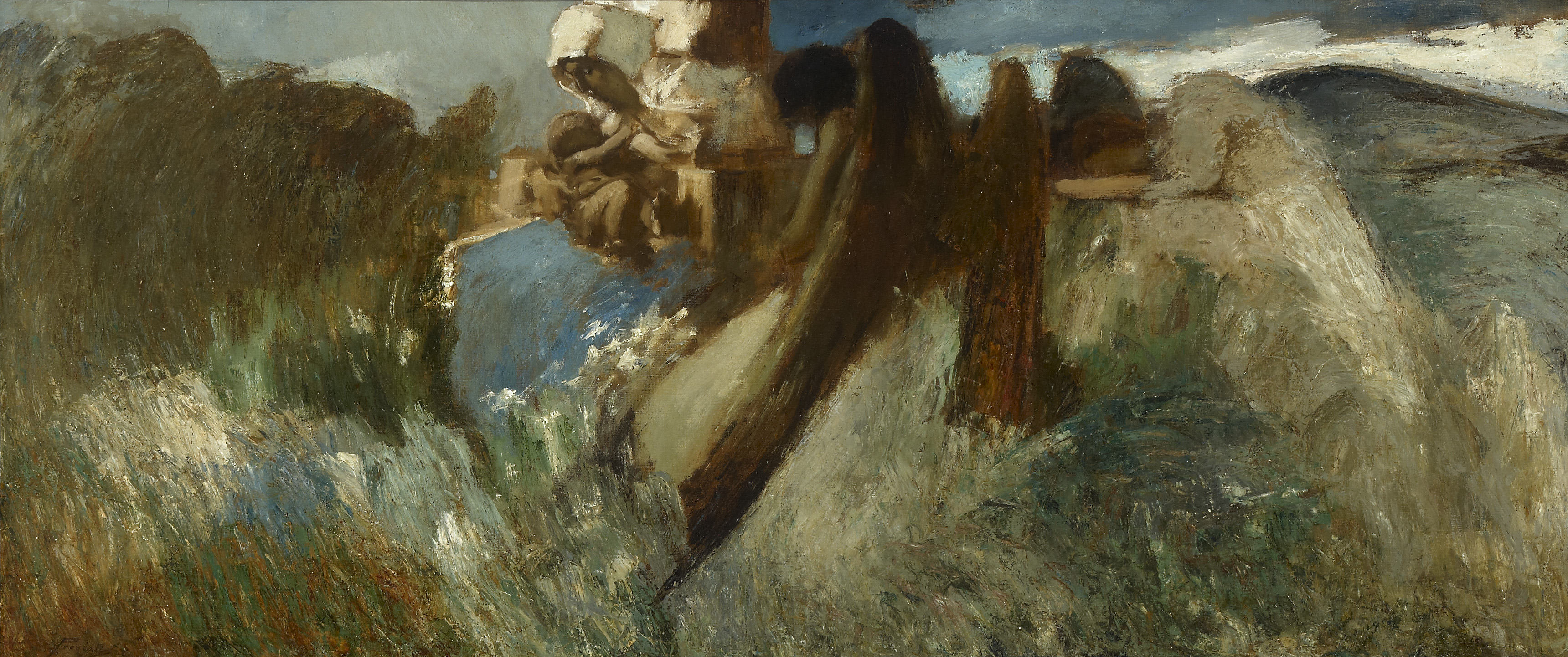
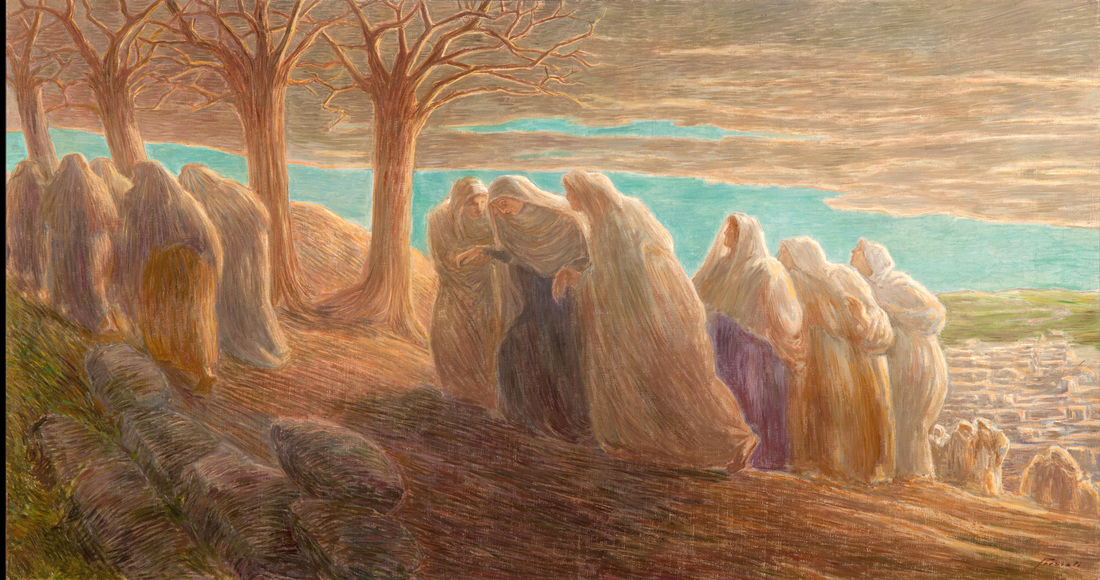
Altri pittori nel tigullio